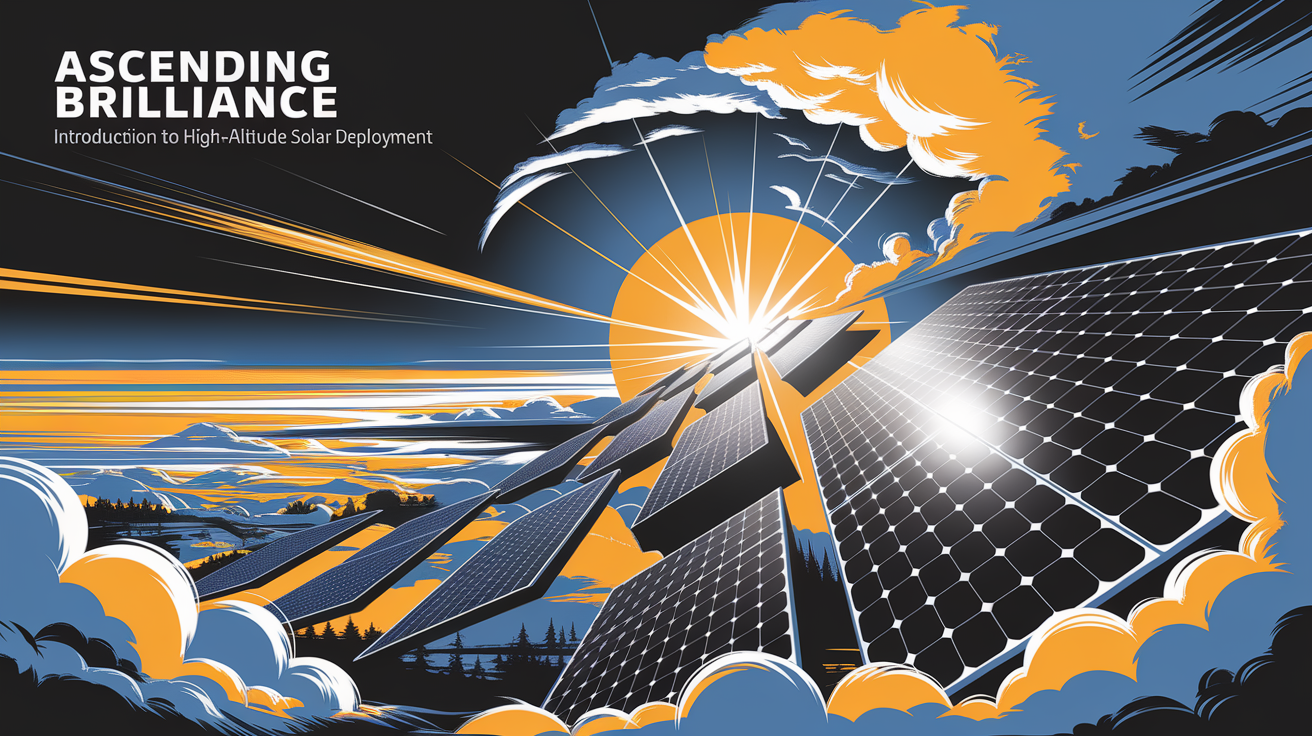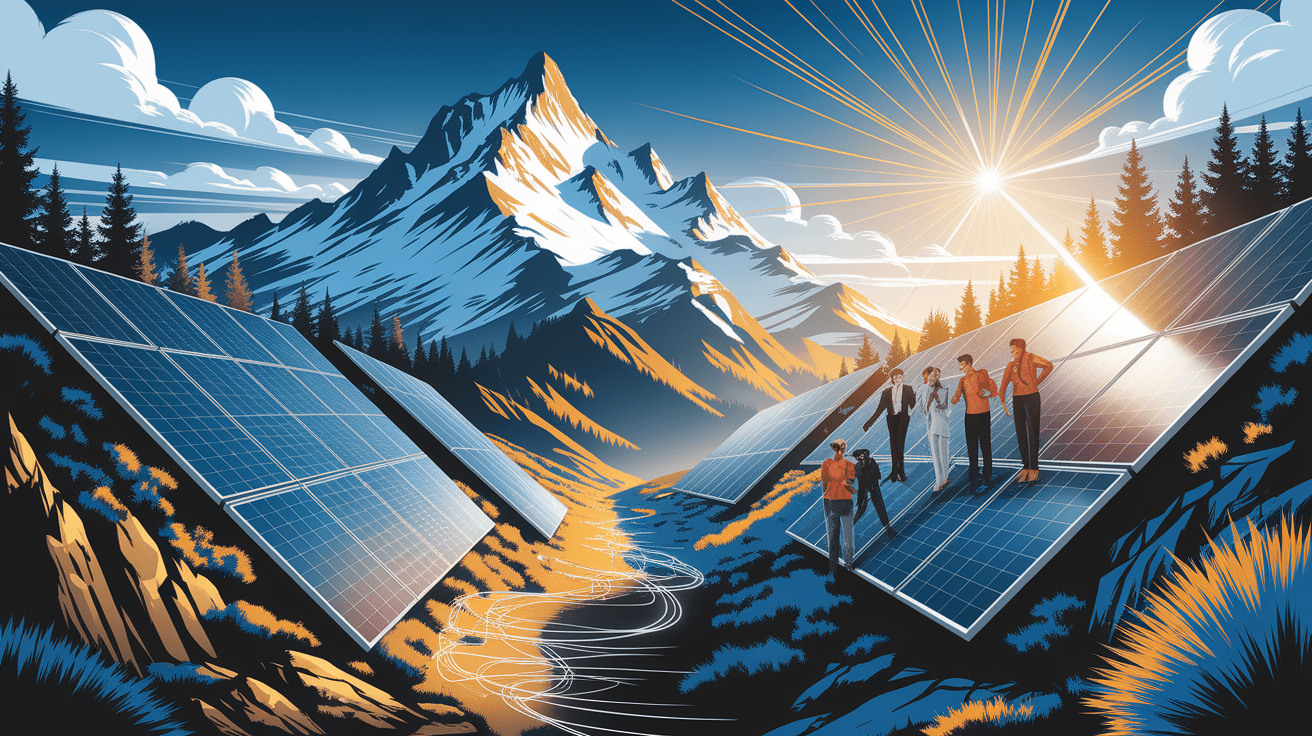Summiting Solar Success: Essential Guidelines for High-Altitude Solar Deployment
Ascending Brilliance – Introduction to High-Altitude Solar Deployment
As global renewable energy adoption expands into terrain once deemed impractical, high altitude solar panels are emerging as critical assets in reaching decarbonization goals. These alpine solar systems, deployed in mountain peak solar arrays and high elevation solar farms, must be engineered to address unique environmental conditions—including thin air, higher solar irradiance, UV radiation exposure, significant wind loads, and heavy snow accumulation. Industry analysts note that atmospheric pressure decreases roughly 1.2 kilopascals (kPa) per 100 meters of elevation, directly influencing altitude solar performance and electrical characteristics (Moser Baer Solar). This shift demands special consideration in design, installation, and maintenance to ensure elevated solar infrastructure delivers peak output with long service life.

Evaluating Your Alpine Environment
Before a single module is installed, comprehensive site assessment drives successful mountainous terrain solar projects. Geographic Information System (GIS) tools and 3D solar irradiance mapping help pinpoint optimal orientation, correcting for shading from ridges, tree lines, and seasonal snow cover. Mountain solar guidelines recommend environmental impact assessments to ensure minimal disruption to local ecosystems and compliance with zoning laws, which may vary considerably across jurisdictions (NASEO Deployment Guidebook). Site-specific studies should factor in atmospheric pressure solar effects, wind load calculations, snow load solar panel requirements, and potential ice formation on elevated arrays.

Choosing the Right Gear for Thin-Air Conditions
Equipment selection determines much of a high altitude renewable energy system’s resilience. Experts recommend modules with adjusted voltage ratings—approximately 1.5% lower per 1,000 meters—to prevent overvoltage in reduced air pressure environments (Outdoor Telecom Cabinet Blog). Models featuring low temperature coefficients, ideally -0.35% per °C or better, protect solar panel efficiency at altitude by mitigating rapid performance swings in thermal cycling solar panels. UV-resistant coatings, reinforced glass, and corrosion-proof frames enhance weather resistance solar panels. Balance-of-system components, including inverters, should maintain performance under temperature extremes, while battery storage for cold weather must be rated for alpine deployment.

Ascending Installation – Procedures & Safety
Executing a mountain solar installation in high elevation photovoltaics territory demands strict adherence to safety protocols. Installers must design mounting solutions with enhanced structural integrity for heavy snow loads and high wind speeds, often increasing attachment points and foundation requirements. In addition, securing elevated solar infrastructure against lightning strikes is vital, with industry standards recommending integrated lightning protection solar systems for remote alpine photovoltaic installations (DOE Severe Weather Resilience Guidelines). Cable management for extreme weather includes UV-rated conduits and watertight fittings to prevent degradation. For mountainous solar deployment, mechanical lifting systems and specialized climbing gear may be needed to maneuver equipment across rugged terrain.

Peak Power at Altitude – Maximizing Output
Thin air solar performance benefits from increased solar irradiance—yet without proper system optimization, these gains can be lost. Utilizing parallel charge controllers or hybrid inverters with multiple MPPTs enables diverse panel orientations in mountain solar arrays, offsetting shading from diverse slopes. Altitude-oriented shade-aware inverter technology helps detect the true global maximum power point, boosting energy yield in partially shaded configurations. The IEC 61853 Climate-Specific Energy Rating (CSER) methodology provides accurate projections of annual energy output in high elevation solar deployment by factoring weather data, irradiance spectra, and temperature variations (Outdoor Telecom Cabinet Blog).
Sustaining Alpine Efficiency – Maintenance Strategies
Maintenance access in remote locations is a significant hurdle for high altitude energy systems. Operators should implement ruggedized, encrypted monitoring devices for early fault detection, ensuring altitude solar performance data is transmitted securely from mountain peak solar arrays. Snow and ice management for mountain solar arrays may include mechanical brushing systems or passive snow-shedding mounts. Weather resistant solar panels require periodic inspection for thermal cycling damage and UV-induced wear. Preventative measures such as drain plugs in junction boxes, elevated equipment platforms, and seasonal debris removal help maintain structural integrity solar systems. Regular calibration of inverters and MPPT units is essential for optimal high altitude renewable energy yield.
Reaching Solar Summits – Concluding Guidelines
High elevation solar farms and alpine photovoltaic installations represent a potent frontier in the clean energy transition, delivering exceptional solar irradiance altitude advantages when designed to withstand environmental extremes. From foundation requirements for high altitude projects to grid connection in mountainous areas, the formula for success blends precise engineering, superior component selection, and adherence to international standards. For operators committed to sustainable, reliable, and high altitude energy systems, implementing these mountain solar guidelines ensures that elevated solar infrastructure can endure the demands of thin air while summiting renewable energy potential.







